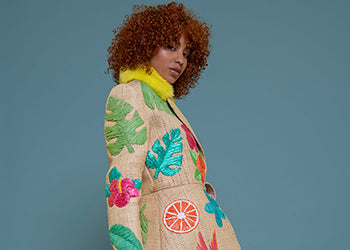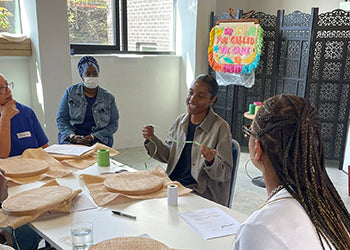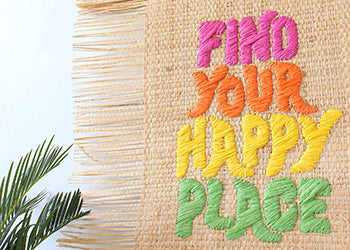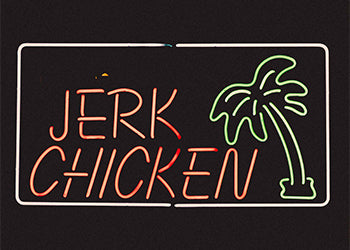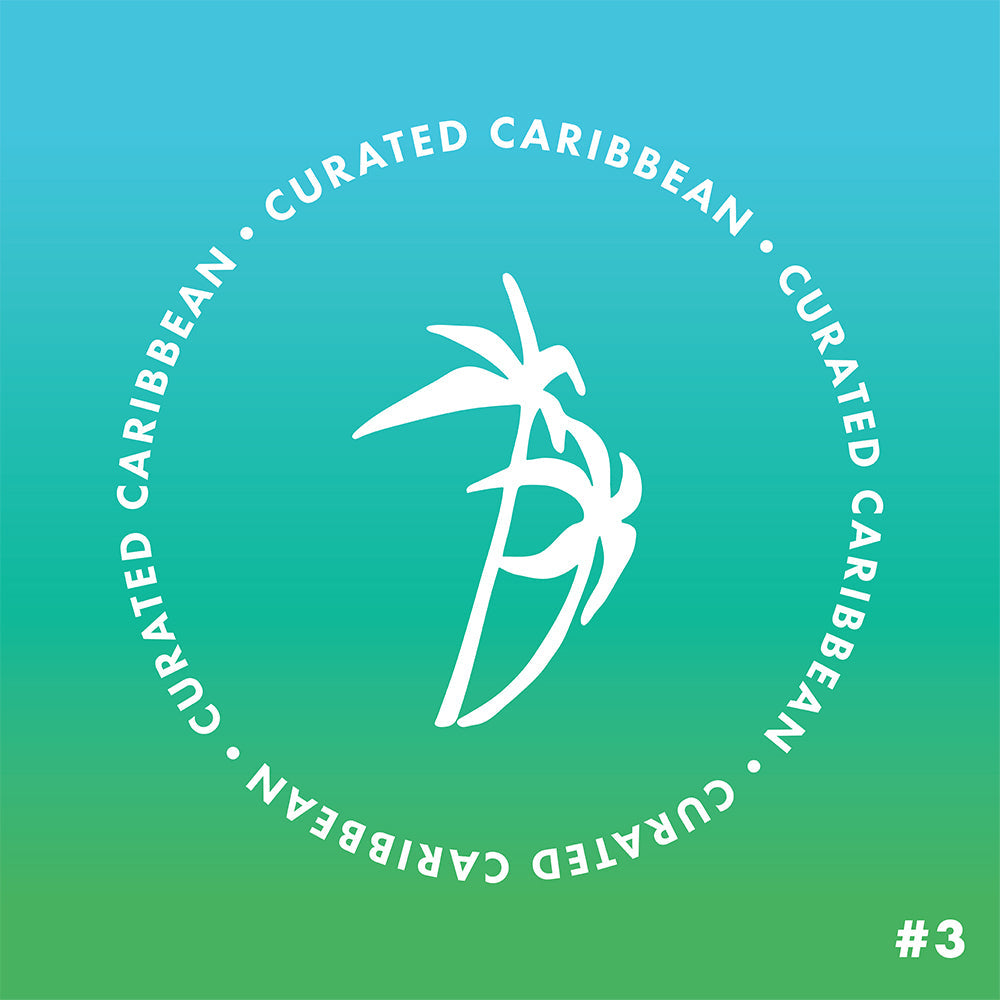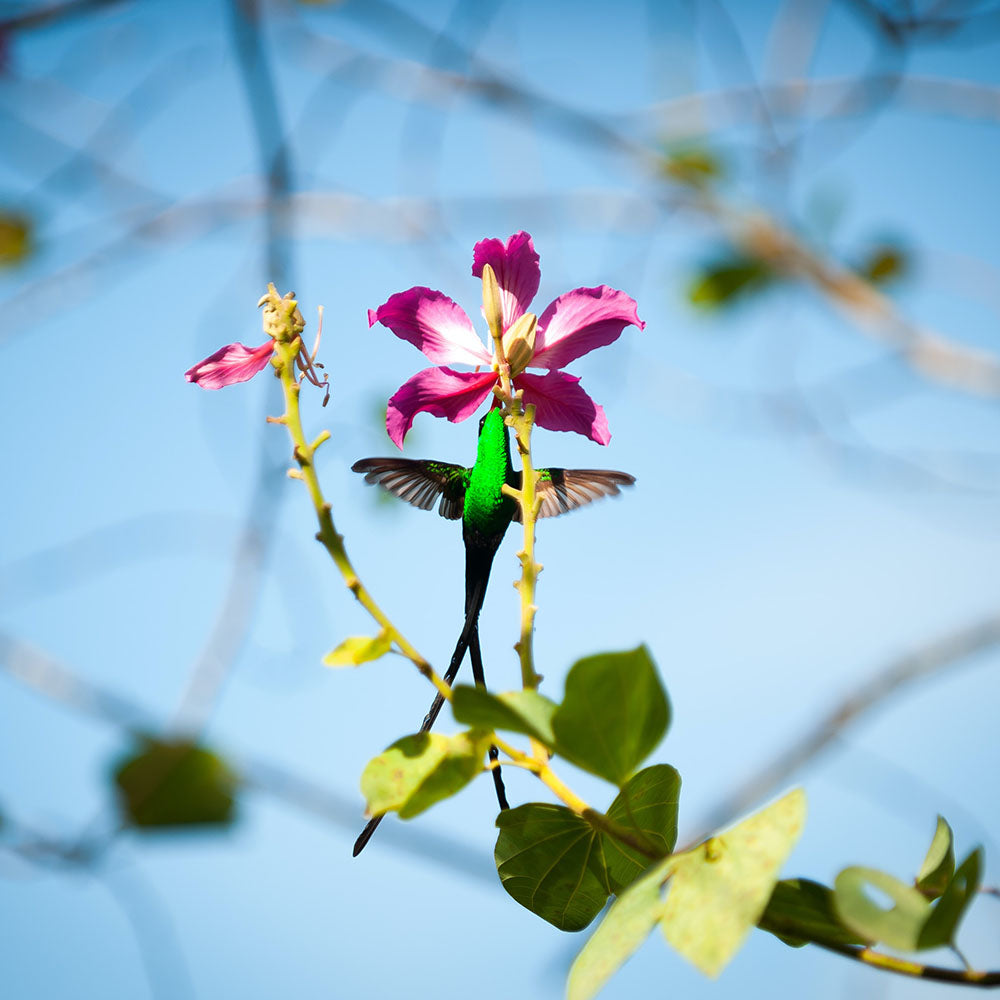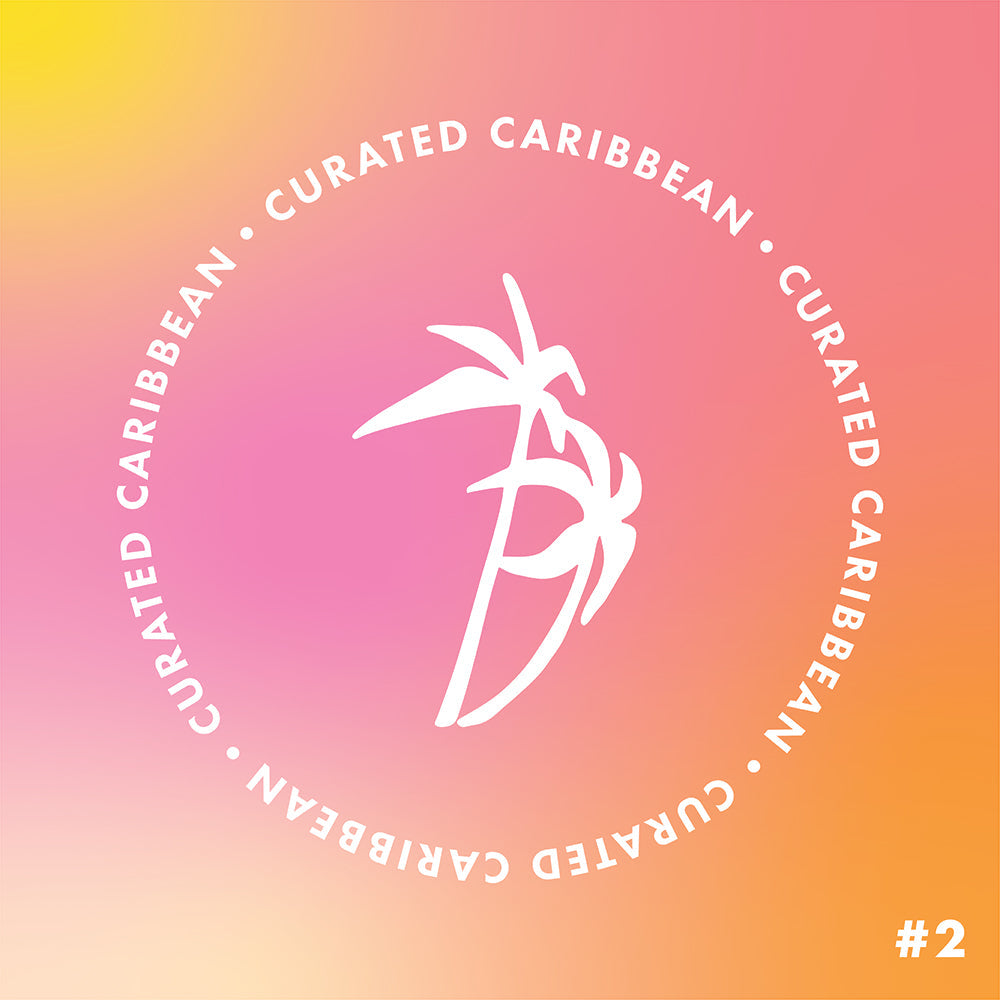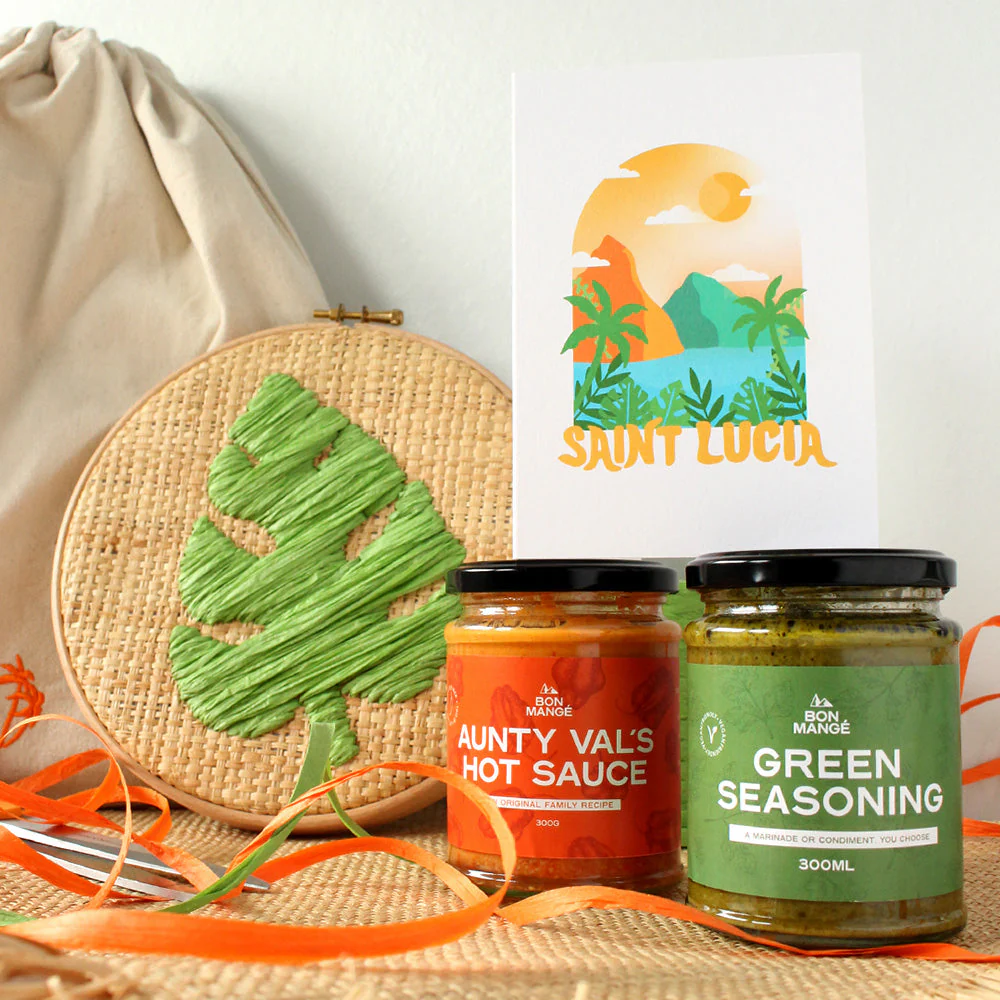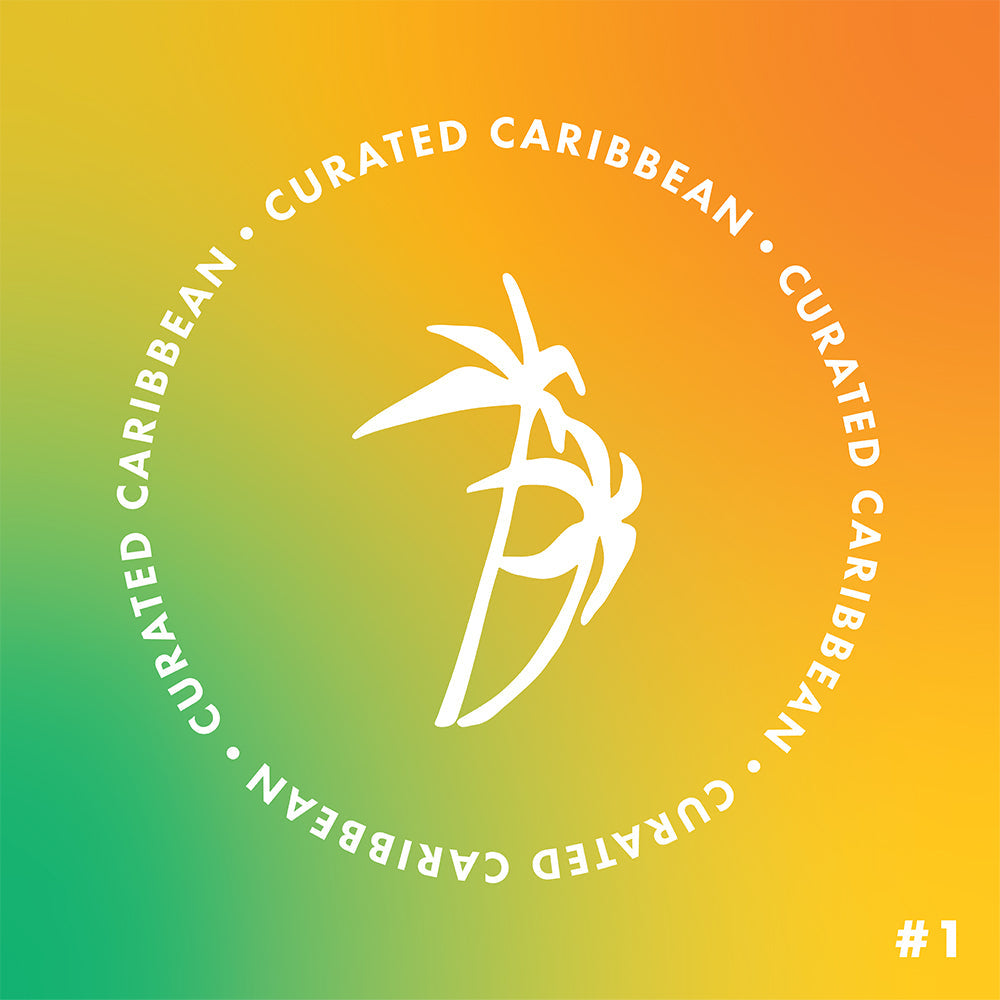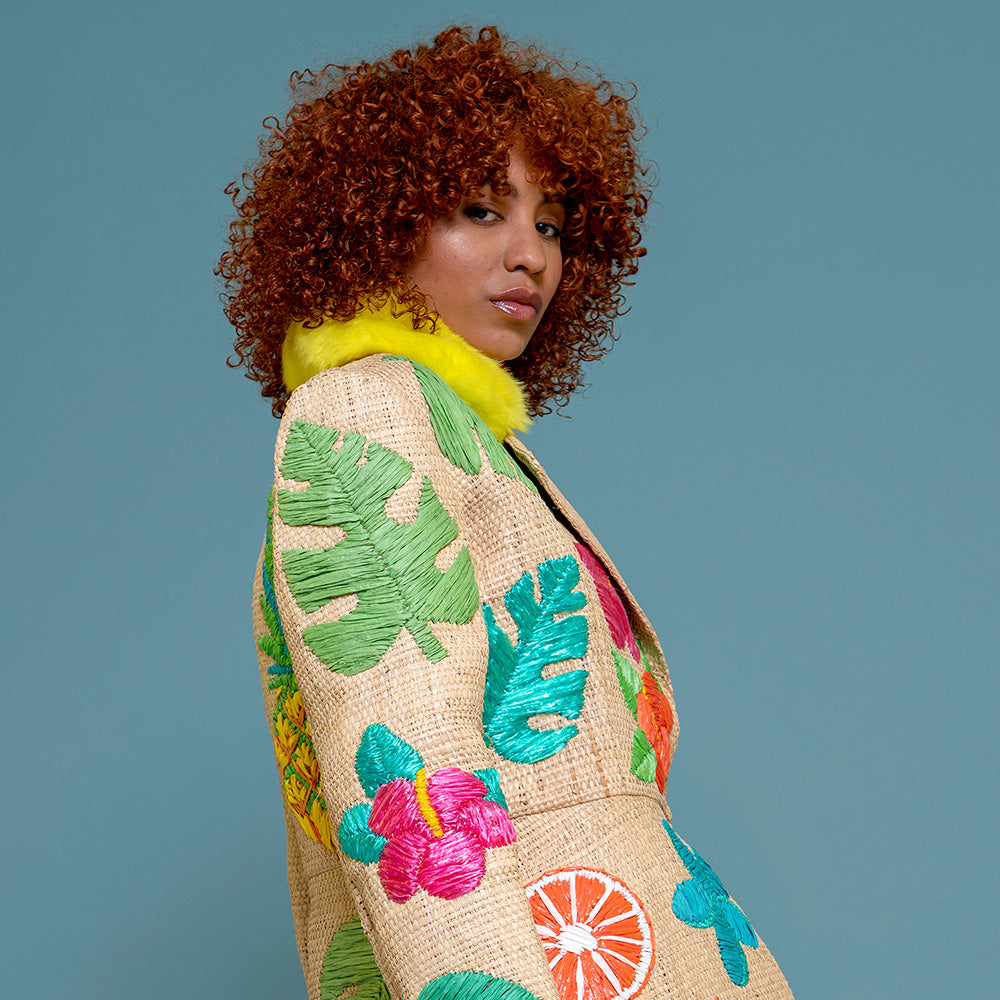
As a fashion designer, I first discovered raffia while designing my graduate collection in 2017. Inspired by the Windrush Generation, I explored Caribbean straw crafts, particularly Caribbean souvenirs made from straw. I was looking for a material that had a similar texture and looked like the different straw materials traditionally used in the Caribbean but one that I could source here in the UK. Not long after starting my search, I came across Raffia, and I’ve been hooked ever since!

Raffia, a versatile material derived from the raffia palm tree, has various uses in fashion, raffia crafts and home decor. So, whether you’re curious about what raffia is, are interested in exploring raffia embroidery, are interested in learning about the different types of raffia, or getting inspired by my raffia-based designs, you’re in the right place. Let’s explore all things raffia!
What Is Raffia?
Raffia is a natural fibre made from the leaves of the raffia palm tree, which thrives in Madagascar and other tropical regions, including parts of Africa, South Asia, and Central America. This tropical palm flourishes in warm, moist climates, requiring temperatures that never drop below 10°C, an annual rainfall of at least 1,500 mm, and a minimum of 25 mm of rain during the driest month.
Belonging to the genus Raphia , raffia palms include around 20 species native primarily to Africa . These trees can grow up to 16 meters (52 feet) tall , with remarkably long leaves - the longest in the plant kingdom - reaching up to 25 meters (82 feet) long and 3 meters (9.8 feet) wide .

Raffia fibre is extracted from the thin membrane on the underside of the leaves. The harvesting and processing of raffia is labour-intensive and is often carried out by hand.
Harvesting
Cutting: Skilled people carefully select and cut the appropriate leaves from the raffia palm trees. It is important to harvest only the correct leaves to ensure the health and sustainability of the raffia palm tree.
Processing
Drying: The harvested leaves are left to dry in the sun.
Fibre Extraction: Once dried, the leaves are processed to extract the raffia fibres. This is traditionally done by hand by splitting the leaves and stripping the fibres. In some cases, machines might be used, but hand processing is still common.
Sorting and Grading: The extracted fibres are then sorted and graded based on their colour, texture, length, and width. This determines the quality and intended use of the raffia.
Dyeing (Optional): Raffia can be dyed to achieve a variety of colours.
Packaging: Finally, the raffia is packaged into bundles, hanks, or other forms for sale or further use. Raffia can also be woven into fabric.
Different Types of Raffia
When you look for raffia, you’ll find that there are three different types of raffia available, I have used all three in my work: natural raffia, synthetic raffia, and paper raffia. Each type has different qualities, let’s look at each one:
Natural Raffia
Natural raffia is the natural fibre from the leaves of the raffia palm tree (as described above). This versatile material is known for its flexibility, durability, and strength and is considered eco-friendly due to its biodegradability. Common uses for raffia include woven baskets, hats, and mats, but it’s also used in raffia crafts, interior design, gardening, gift wrapping and even fashion.
Is raffia waterproof? While raffia is not fully waterproof, it does have natural water-resistant properties, making it a durable choice for many uses.
Can you dye raffia? Like other natural fibres, raffia is easily dyed with natural dyes.

I use natural raffia that has been woven into fabric in my raffia embroidery technique. You can have a go and raffia embroidery by using one of our Raffia Embroidery Kits or by joining us at our next workshop in London!
Paper Raffia
Unlike natural raffia, paper raffia has a consistent, even texture and is made from wood pulp or cellulose. Typically, paper raffia is available in a 5mm width (unfolding to around 25mm when flattened), this material offers good strength for lots of different crafting projects, although it is not as durable as natural raffia. A benefit of paper raffia is the vast range of colours available, perfect for crafters. This material is popular for raffia crafts such as crochet and is also used in gift wrapping and floristry.

Synthetic Raffia
Synthetic raffia is another man-made alternative to natural raffia. Made from a mix of materials such as cellulose, rayon, nylon, or polypropylene, it shares the uniform texture and reasonable strength of paper raffia, along with a similar colour range. However, synthetic raffia's most noticeable characteristic is its shiny appearance, setting it apart from both natural and paper versions. Durable and versatile, it is often used in crafting, especially in crochet and knitting projects. It is also commonly used in industrial applications, outdoor furniture, and certain fashion items. It’s important to note that, unlike natural and paper raffia, synthetic raffia is not biodegradable.

Is Raffia Sustainable?
Raffia has gained more attention in recent years, largely due to its sustainability. Natural raffia, in particular, is one of the most eco-friendly fibres used in fashion and crafts. Here’s why:
Biodegradable: Raffia is a 100% natural material, which means it is biodegradable and doesn’t contribute to long-term plastic pollution.
Renewable Resource: Raffia comes from the raffia palm tree, which is a renewable resource. The trees can be sustainably harvested, and the process of collecting raffia doesn’t require cutting down the tree itself.
Low Environmental Impact: Raffia can be grown without heavy use of pesticides or fertilisers, making it a relatively low-impact crop compared to other natural fibres like conventially grown cotton, which requires large amounts of water and chemicals.
Further Reading
Why I Love Using Raffia in My Designs and Workshops
In my raffia embroidery workshops and raffia embroidery kits, I teach participants how to use raffia to create beautiful, textured designs. Whether you’re new to embroidery or an experienced crafter, raffia provides an interesting material to bring your creative ideas to life. Raffia embroidery is a fun, yet relaxing and mindful activity.
How You Can Get Started with Raffia Embroidery
Now that you know a little more about raffia, here are a few ways you can start exploring this material for yourself:
Check out the Raffia Embroidery Kits: Whether you’re a complete embroidery beginner or an experienced crafter, our raffia embroidery kits include everything you need to create your own beautiful raffia embroidery hoop art.
Book a spot in one of my Raffia Embroidery Workshops: If you want to try raffia embroidery guided by me, join one of my workshops in London and learn how to use raffia in embroidery and design. You can enjoy using a range of paper raffia colours and ask any questions you may have about the craft.
Discover Raffia Fashion & Home Décor – Explore how I incorporate raffia into modern fashion, with my graduate collection. Looking for a distinctive home décor piece? Check out my raffia embroidery wall hangings. If you have a custom raffia embroidery idea in mind, feel free to get in touch - I'd love to bring your vision to life!
Final Thoughts on Raffia
Whether you're drawn to raffia for its sustainability, its versatility in fashion and embroidery, or simply its unique texture, I hope this post has helped answer the question, “What is raffia?” and inspired you to explore this incredible material in your creative projects.
If you’d love to try raffia embroidery, check out my raffia embroidery kits or book a spot in one of my workshops - I can't wait to see what you create!

